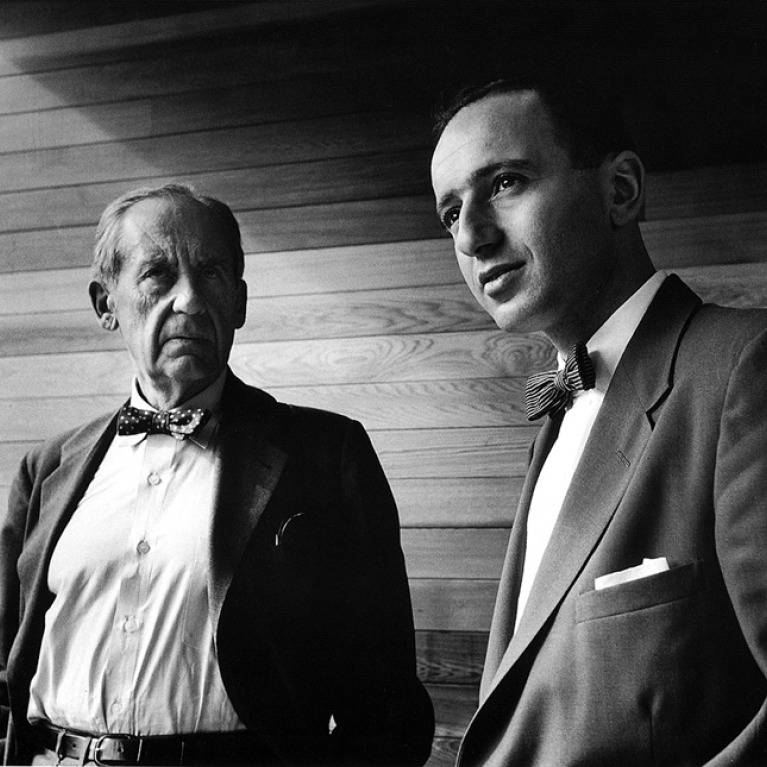The fifteen featured projects—five houses and five towers in Sydney, and five major commissions beyond Sydney—focus on Seidler’s lifelong creative collaborations, a pursuit he directly inherited from Bauhaus founder Walter Gropius, with progressive artistic visionaries: architects Marcel Breuer and Oscar Niemeyer, engineer Pier Luigi Nervi, photographer Max Dupain, and artists Josef Albers, Alexander Calder, Norman Carlberg, Sol LeWitt, Charles Perry, Frank Stella, and Lin Utzon.
This exhibition was developed by Intercontinental Curatorial Project with Penelope Seidler and Harry Seidler & Associates in Sydney and is presented through architectural models, sculpture maquettes, photographs, films, correspondence, books, scrapbooks, periodicals, drawings, and original sketches—provided by the architect’s family, Historic Houses Trust of New South Wales, The Josef & Anni Albers Foundation, The Marcel Breuer Digital Archive at Syracuse University, and the private archives of artists Norman Carlberg, Charles Perry, and Lin Utzon.
“As much as the needs of fact, the needs of the spirit and the senses, must be satisfied. Architecture is as much a part of the realm of art as it is of technology; the fusion of thinking and feeling.” Harry Seidler, 1963.
"Harry Seidler: Lifework" book by Vladimir Belogolovsky with additional texts by Chris Abel, Barry Bergdoll, Norman Foster, Kenneth Frampton, and Oscar Niemeyer will be designed by Massimo Vignelli and published by Rizzoli in March 2014.
Venues and Dates:
Museum of Estonian Architecture, Tallinn, Estonia: October 4 to November 25, 2012.
National Gallery for Foreign Art, Sofia, Bulgaria: December 20, 2012 to January 20, 2013.
Latvian National Museum of Art, Riga, Latvia: Late February to late March, 2013.
AIA Center, Houston, USA: April 4 to May 31, 2013.
Black Mountain College Museum, North Carolina, USA: June 14 to September 7, 2013.
University of Manitoba, Winnipeg, Canada: September 12 to late October, 2013.
Museum of Sydney, Sydney, Australia: July 26 to November 9, 2014.
Planungswerkstatt, Vienna, Austria: Early December, 2014–mid-January, 2015.





























